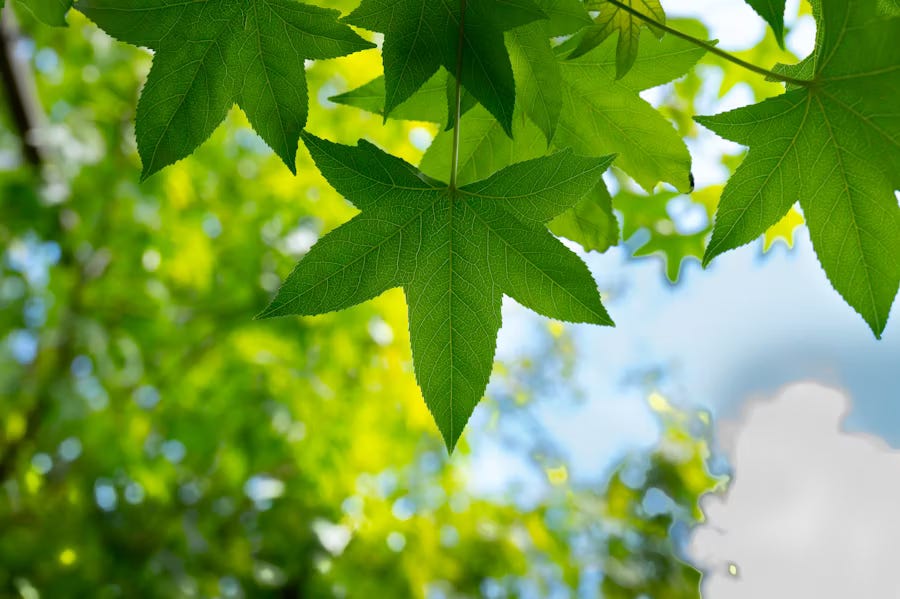Narrated Essay: When the Maple Turns Again
On the fulcrum of springtime and awakening to our aliveness
Springtime in North Carolina is gorgeous. It can’t help itself. Perhaps it’s oblivious to—or, better yet, in radical disagreement with—the brokenness of our times. Either way, the azaleas burst into riotous bloom, the crepe myrtles frill themselves in defiant pinks. In the mornings, birds trade secrets across the creek, their calls carried on air perfumed with fresh dew and pine needles to the back porch, where I sit in my mother’s rocking chair.
This is the place where one branch of my family has put down roots. An invisible wheel exists here among us, with smaller wheels—wheels within wheels—persisting through the seasons. It’s also the place where a beloved uncle passed last autumn, just as the maple outside his bedroom window flared into auburn light. In his final days, we watched that tree together and recalled long-forgotten stories. I remembered a visit to Rumson, when he swung me onto his shoulders and walked down the street. I remembered how the curves of his shoulders hummed beneath me as he laughed. How tall I felt then, how near to the canopy of trees; how the world suddenly seemed bigger and closer, and I, more a part of it—alive to everything, and everything alive around us.
Memory can work like this—the way light filters through leaves or a scent pulls you backward. In a recent conversation with Krista Tippett, musician Justin Vernon (better known as Bon Iver) said, “I thought I was done being surprised… but there are things behind things behind things.” The layers accumulate, folded under the weight of time, only to surface in time, unbidden yet strangely familiar.
Now the maple is green again, its leaves doing what they were made to do when touched by springtime light. Its roots drink in a soft rain. Some layers remain hidden, or slip away, only to circle back, as though time itself were not linear, but folding in on itself like fabric. And I think about how you have entered the mystery now, and maybe you are humming in some new, unknowable way.
Practice—call it “mindfulness” or whatever name feels right—is an agreement to be touched by the world, by the nature of our aliveness. David Abram called it “a kindredship of matter with itself.” We learn to live in reciprocal communion, even unknowingly, and discover within ourselves gradually more tonality, more steadiness, more truth. When we plant ourselves in this moment, and notice the ways we are thirsty, and then return again and again, we begin to sense that our lives are not just motion or mechanism, but part of some deeper listening—not just hub and spoke, but spiraling motion.
Hope, too, is a force of nature. It arrives unannounced. Here’s another chance, another season. The word numinous comes from numen—a Latin term that means both “a nod of the head” and “divine will.” Now spring has found its fulcrum, and with a quiet nod toward resurrection, it invites us to reach for something like joy, whether or not we feel ready or agree with time’s assessment.
Springtime is not a promise. It’s a presence. A tilt in the wheel. A shimmer in the unseen. A reminder that aliveness is not always sweet or simple—but it is, still, ours.






I had no idea that you live in NC. I just moved to the State late last Fall and the warmer days and feel of some humidity starting to build feels like soul food. Thank you for your beautiful writing.